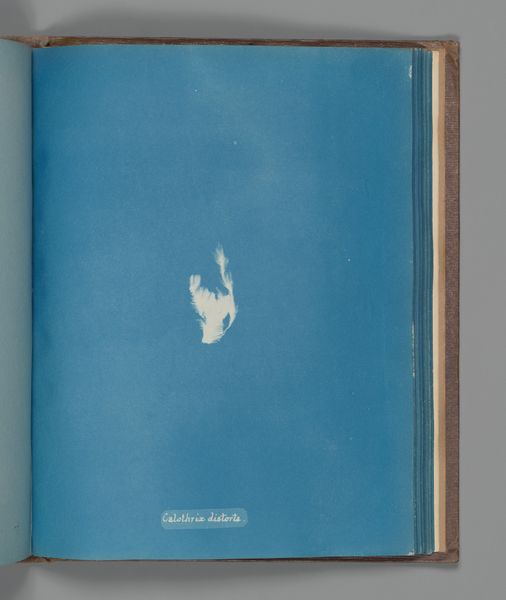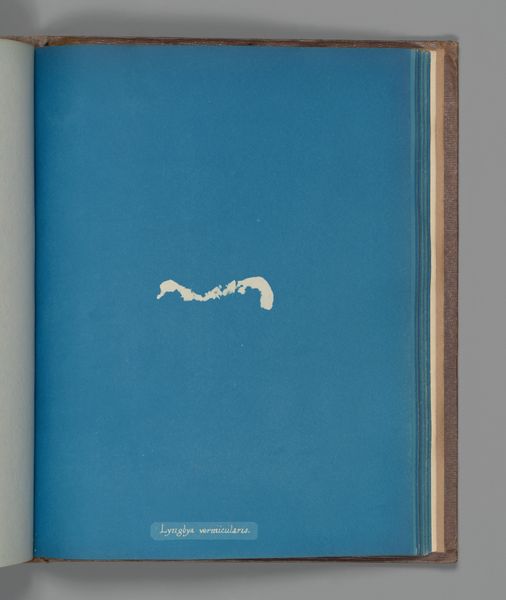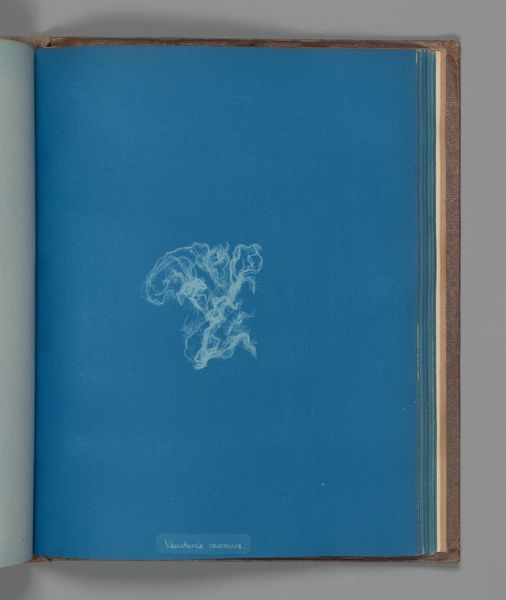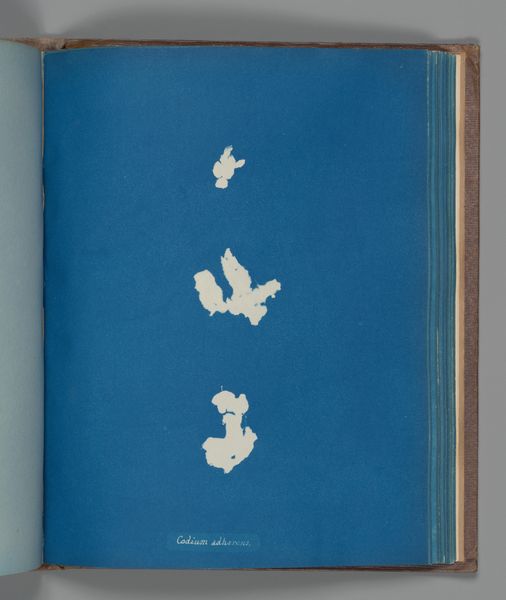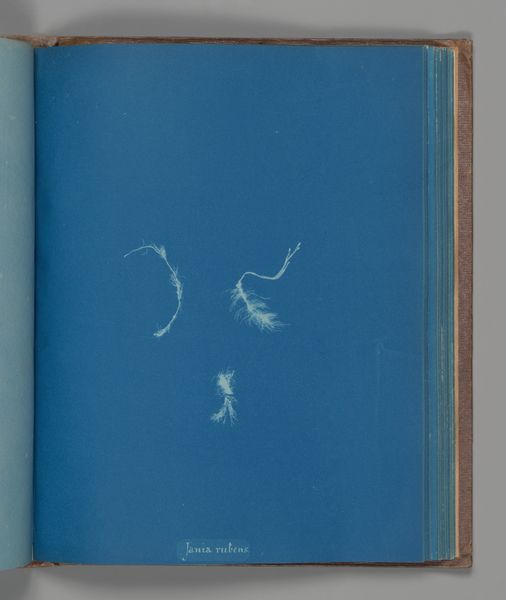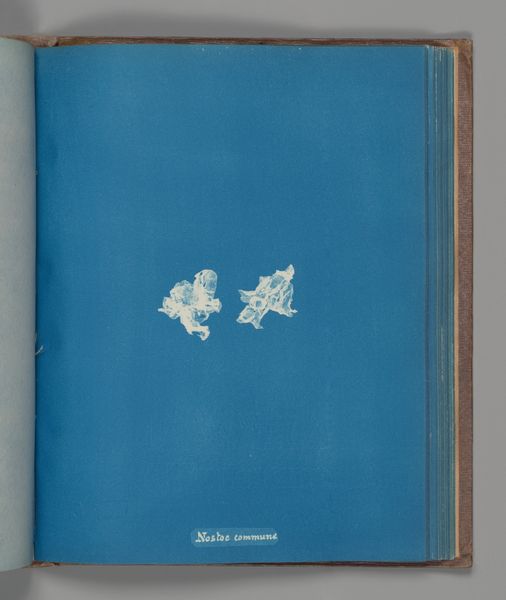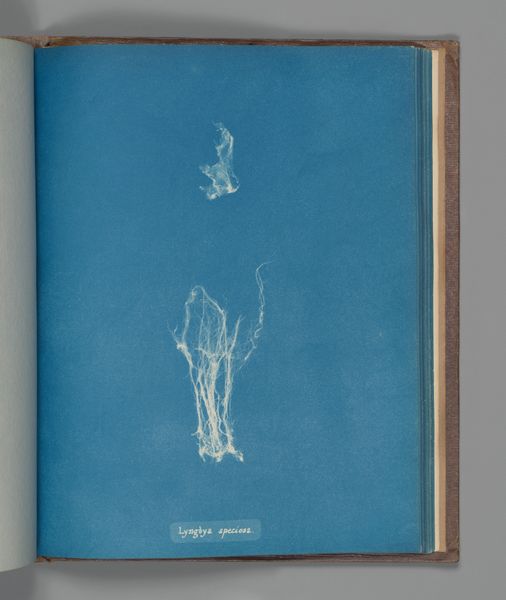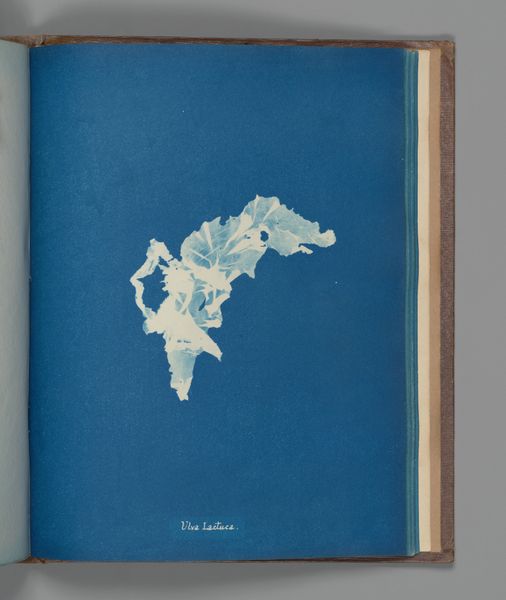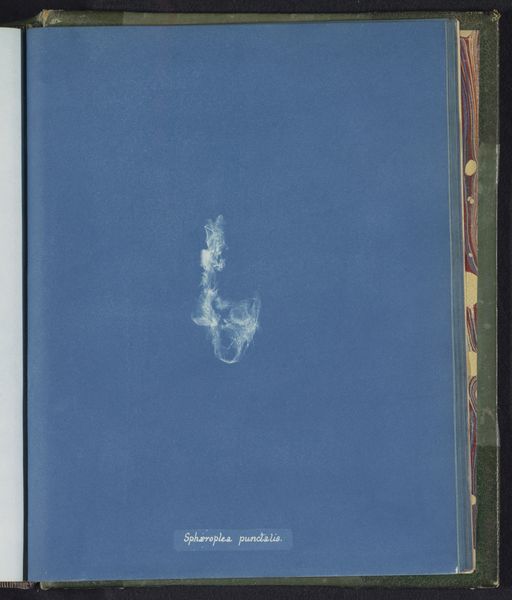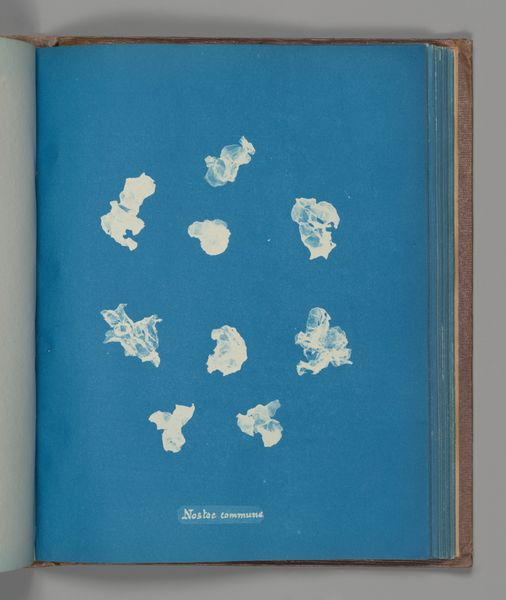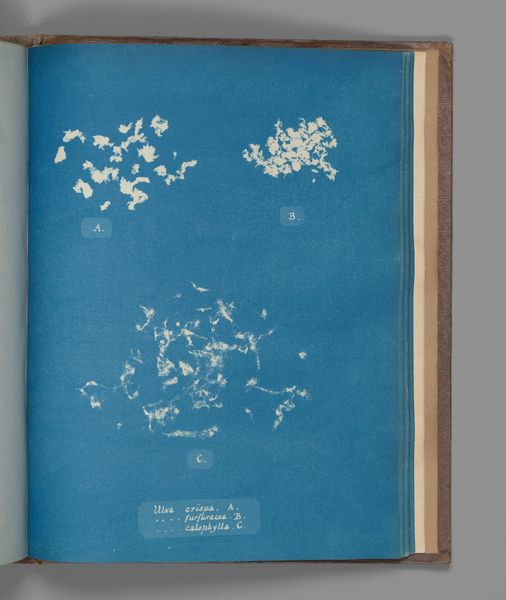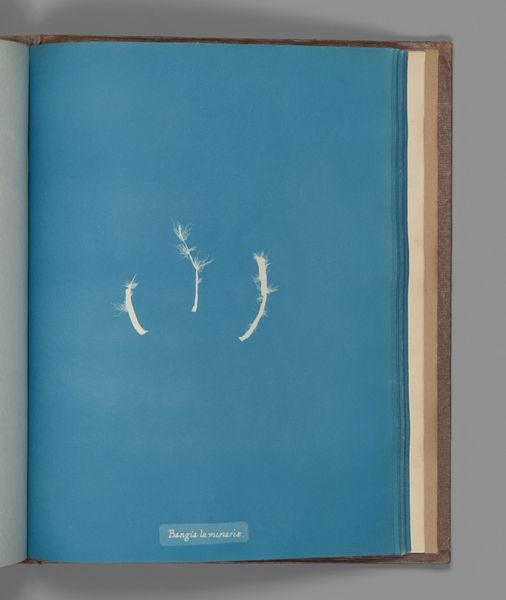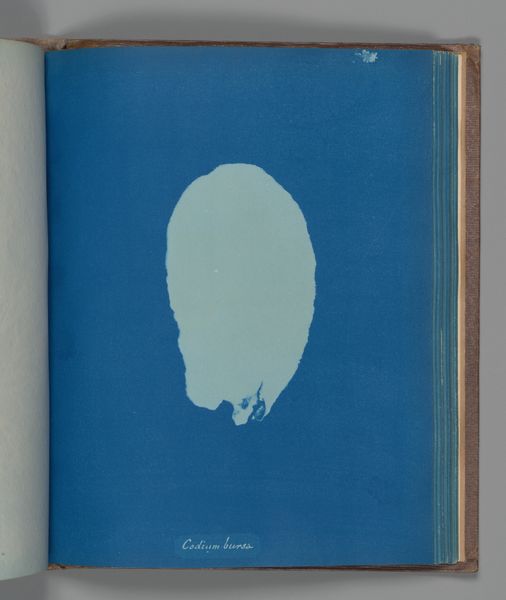
print, cyanotype, photography
# print
#
cyanotype
#
photography
#
plant
Dimensions: Image: 25.3 x 20 cm (9 15/16 x 7 7/8 in.)
Copyright: Public Domain
Curator: Welcome. We're standing before Anna Atkins' "Vaucheria caespitosa," a cyanotype from between 1851 and 1855. Editor: Striking, isn't it? The crisp white form against that intense blue. It’s ghostly, like an echo. It is surprisingly direct, considering its age. Curator: Indeed. Atkins was a botanist and photographer, and she created these cyanotypes to document British algae. Think about the accessibility she enabled: circulating scientific knowledge beyond established academic circles at the time. Editor: Right. And we must consider cyanotype as a chemical process. Exposing treated paper to sunlight - that’s a direct material intervention, using the sun’s energy to record the natural world. It flattens the plant into a photogram. Curator: Absolutely. This particular image represents "Vaucheria caespitosa," a type of algae. But the stark simplicity pushes against straightforward classification. Its visual impact goes beyond mere illustration. Editor: Beyond the pure beauty of it all: Imagine Atkins preparing the chemicals, coating the paper, carefully laying out the specimen, then patiently waiting for the sun to do its work. The labor involved, connecting art, science and craft. Curator: Precisely, these photographs existed because of larger cultural movements towards scientific education. Science became popular; think public lectures, the publishing of nature books for broader audiences... This photograph actively participated in those events. Editor: The politics of imagery and the hand. Even within what we deem ‘scientific,’ there is human input, which should be remembered. It serves not only as an index, but a portrait of the relationship. Curator: That’s a superb point. By harnessing the cyanotype, she bridged art and science but did so much more than documentary work, she engaged in contemporary debates on access to knowledge. Editor: Reflecting on Atkins’ dedication, what resonates is the careful interplay between nature, technique, and human intervention, offering a glimpse into her process and the world she sought to document.
Comments
No comments
Be the first to comment and join the conversation on the ultimate creative platform.
